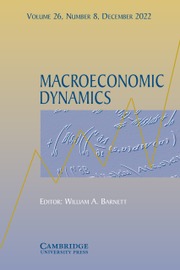Article contents
A model of safe asset shortage and property taxes in China
Published online by Cambridge University Press: 20 December 2024
Abstract
Real estate is a major component of China’s national wealth, serving as a key store of value. Property taxes potentially influence households’ belief in the stability of the housing market, resulting in varying effects of such taxes. This paper constructs an equilibrium model of stores of value to examine these effects under diverse beliefs. The results show that property taxes can constrain the growth of housing prices if households maintain their belief in the future stability of housing values. However, damaging this belief would lead to a safety trap with a decline in output. The paper also demonstrates that using tax revenue to finance government bond issuance can be an effective way to lower housing prices and increase output.
Information
- Type
- Articles
- Information
- Copyright
- © The Author(s), 2024. Published by Cambridge University Press
References
- 1
- Cited by

